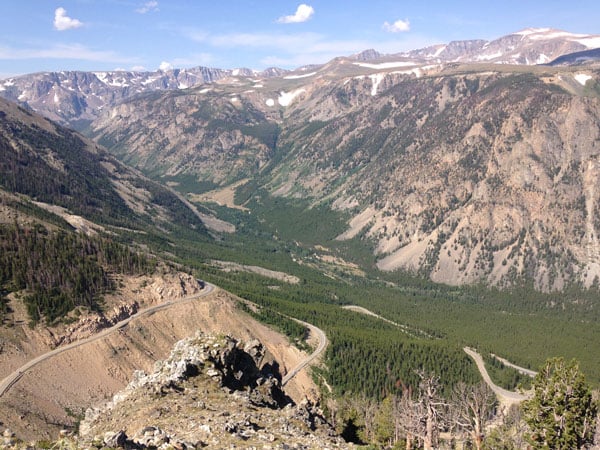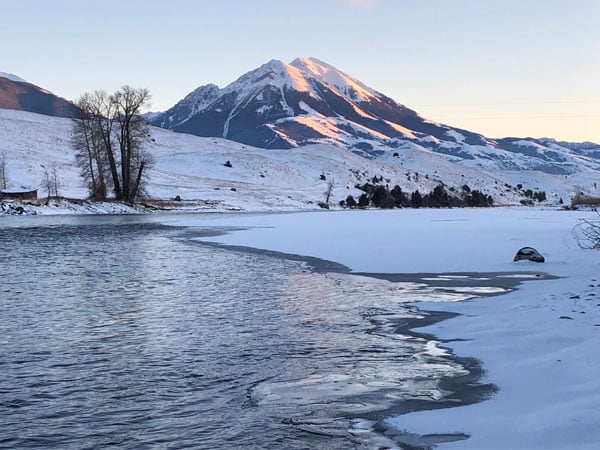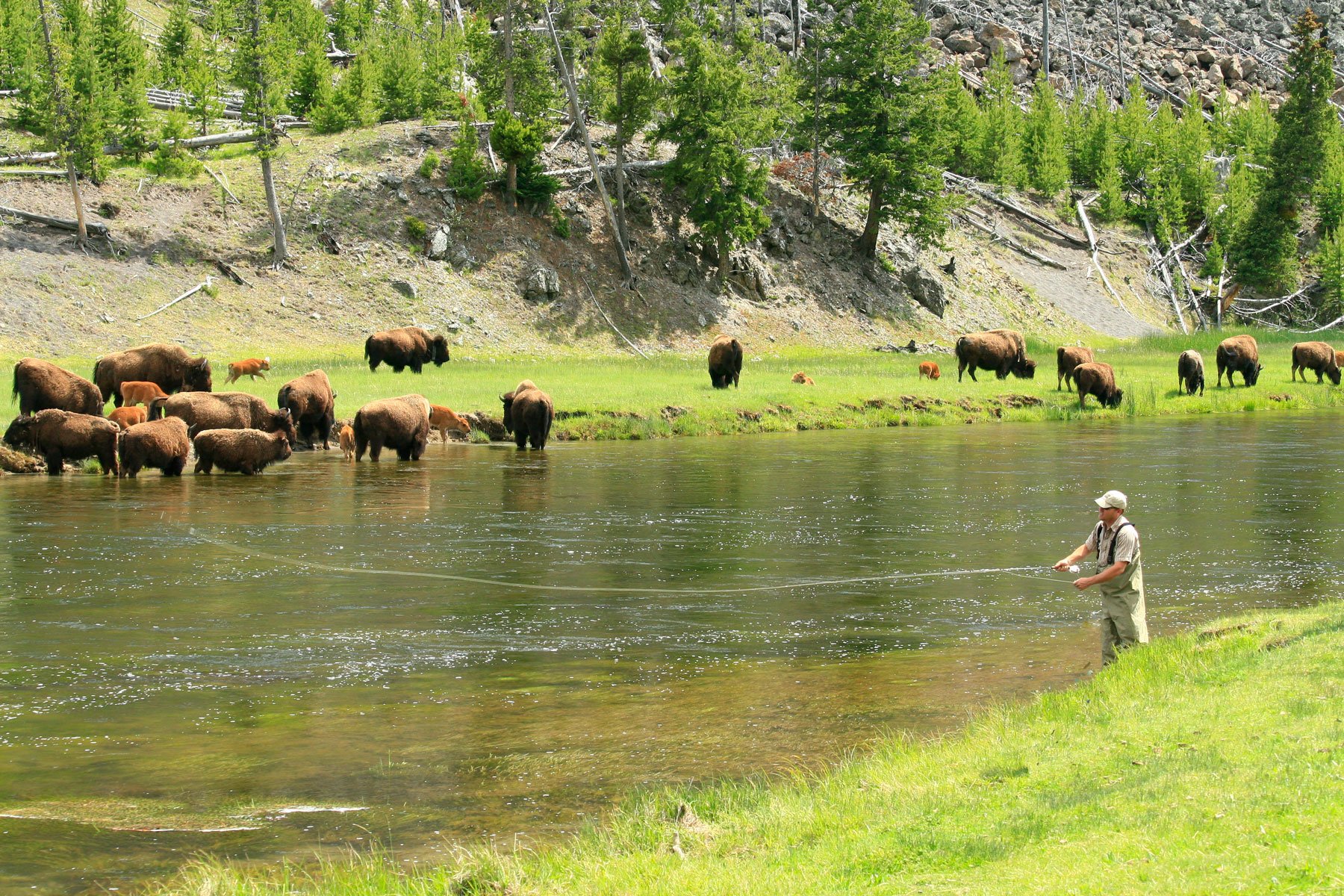The Most Scenic Drives to Yellowstone
YELLOWSTONE SCENIC DRIVES
You’ve decided you’re driving to Yellowstone. Which route will you take? With five entrances to the park, you’ll have your pick of gorgeous scenery, abundant wildlife, broad vistas, towering peaks, and blue-ribbon trout waters en route.
Ask a group of Yellowstone lovers which is their favorite approach to the park, and you’ll get passionate responses. Here’s what some of them have to say.
Beartooth Highway
“My favorite is driving over the Beartooths,” says Holly Williams, program volunteer with Yellowstone Forever. “I just like the tundra environment up on top, the alpine flowers, and the scenic views.”
One of the most dramatic approaches to Yellowstone, this National Scenic Byway winds a 68-mile serpentine route between Red Lodge and Cooke City, Montana. Topping out at 10,947 feet, U.S. Route 212 traverses a vast high-elevation wilderness, where alpine meadows are filled with flowers, mountain goats are often seen grazing, and snow lingers most of the summer. Rugged, remote, and spectacular, the road provides panoramic views of granite peaks and glacier-sculpted valleys, including some of the world’s oldest rocks. The Beartooth Highway is one of less than 30 designated All-American Roads in the United States. An All American Road has “the same criteria as a National Scenic Byway, but possess multiple intrinsic qualities that are of national significance and the byway must be considered a destination and reason for travel unto itself.”
Chief Joseph Scenic Byway
“The Chief Joseph Highway from Cody to Cooke City, hands down,” says longtime park visitor Eilish Palmer of her favorite drive to the park. Connecting Cody, Wyoming to the Beartooth Highway and the park’s northeast entrance, this 47-mile stretch of Wyoming 296 features beautiful Wyoming landscapes, few people, and fascinating history. Passing between the Beartooths to the north and the Absaroka Mountains to the south, the highway traces the route of the Nez Perce Indians led by Chief Joseph as they fled the U.S. Cavalry from Yellowstone National Park to Canada in 1877.
Both the Beartooth and Chief Joseph highways will place you at the park’s northeast entrance. “I think the northeast entrance is the most stunning!” Says Kathy Schmidt, who volunteers for the National Park Service. “Passing through two little towns that look like they just popped out of the old wild west…, with the beautiful Soda Butte Creek, Ice Box Canyon, Barronette Peak, Lamar Valley, and everything in between!”
Grand Teton National Park and the John D Rockefeller, Jr Memorial Parkway
Many visitors agree that entering the south entrance via US 191 is the way to go. There’s nothing quite like seeing the dramatic Tetons rising sharply 13,000 feet above the cold lakes, braided rivers, verdant meadows, and deep forests that adorn the broad valley below. Here, 4.5 billion years of earth history—from earthquakes and glaciers to tectonic forces—are on display, as well as bison, bears, elk, pronghorn, and other wildlife.
Connecting the two parks is the John D Rockefeller, Jr. Memorial Parkway, named for the late conservationist and philanthropist who helped make several national parks a reality. You’ll enter the south entrance to Yellowstone, passing Lewis Lake and broad lodgepole pine forests before arriving at the shores of Yellowstone Lake at Grant Village and West Thumb.
Paradise Valley
If you drive Highway 89 south to Yellowstone’s north entrance, you’ll find Paradise Valley aptly named. “It looks like something out of the movie A River Runs Through It,” says local guide Shauna Baron, referring to the classic western river views. The highway follows the picturesque Yellowstone River past sprawling ranches and the rugged peaks of the Gallatin and Absaroka mountain ranges, on its way to the park’s wildlife-rich north entrance. Watch for osprey, bald eagles, and humans fishing on the Yellowstone, the longest un-dammed river in the lower 48 states.
Not to be Left Out…
The east and west approaches to the park also have much to offer.
Departing from the classic western town of Cody, Wyoming, the remote and mountainous east entrance road climbs a high mountain pass before descending to the shores of Yellowstone Lake. In fact, Teddy Roosevelt once called the drive from Cody to Yellowstone’s East Entrance “the most scenic 50 miles in the world.”

On the west side of the park, West Yellowstone is a popular headquarters for fly fishing many of the region’s famous blue-ribbon trout streams, including the Madison River. If you prefer two wheels to four wheels, the West Entrance is a popular spot for spring and fall biking in the park.
“You can’t go wrong any way you go,” says regular park visitor Mark Chambers. “In all honesty, every road leading to Yellowstone is breathtaking.”
Want a live look at what’s going on at the park entrances? The Park Service has webcams that provide views of the current conditions around the North Entrance and Mammoth Hot Springs, and the West Entrance.
Jenny Golding is the founding editor of A Yellowstone Life and writes from her home at the north entrance to Yellowstone in Gardiner, Montana.
For more travel experiences to Beautiful Places on Earth™ available from Xanterra Travel Collection® and its affiliated properties, visit xanterra.com/explore.
Want to experience Yellowstone in-depth? See what makes Yellowstone National Park a great place to work for a season or longer!
Related Stories
- Related Stories




